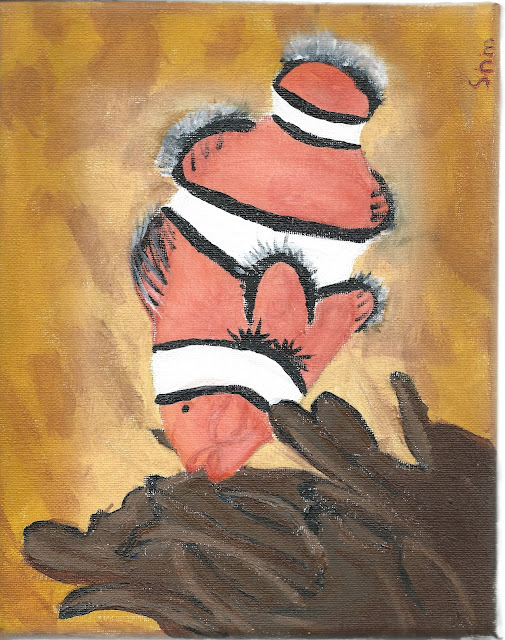Tuesday, 17 November 2015
Monday, 16 November 2015
Friday, 13 November 2015
Tuesday, 10 November 2015
Letter to Mr Fuhr
1342 Richmond St
Kelowna B.C
V1Y 3S8
Stephen Fuhr
House of commons
Ottawa, Ontario
K1A OA6
November, 5, 2015
Dear Mr Fuhr,
Congratulations on becoming an MP.
I have some concerns about oceanic pollution. I believe that this problem is getting serious. Soon the ocean is going to be so full of chemicals and toxins that it will cause fish and other organisms to die, water will no longer safe to drink, and coral reefs will disappear. The toxic build up in fish is slowly poisoning our bears. The whole earth relies on the ocean’s ecosystems, if those systems collapse almost every other ecosystem will also fail. I think this problem can be fixed with some work and time.
If we used less harsh chemicals in shampoos and cleaners, natural fertilizers, and were smart about how industry uses water, we could get started on fixing ocean pollution. Maybe to get people motivated to do these things, there could be Government sponsored environmental advertising. We also need more government regulation of toxic chemicals in Canadian manufacturing.These are just some of the things we could do. I hope this letter helps this problem be fixed.
I am looking forward to your reply.
Respectfully, Shiloh Marriott
Monday, 9 November 2015
Coral reefs report.
Coral reefs
BY Shiloh Marriott
November 9, 2015 Introduction
Coral reefs are one of the most populated habitats in the ocean world. A coral reef has lots of amazing organisms living in and around them. These organisms are biotic (which means living). There are also a-biotic (meaning non-living) things that play a role in coral reefs. Wether it is good or bad, we also have a substantial influence on coral reefs. Coral reefs are very intriguing habitats and organisms.
Biotic
Coral is made of little animals call coral polyps. polyps are transparent, but look colourful because of the algae living in side them. This algae gives them most of there energy by preforming photosynthesis so it can provide food for it and its host. Coral polyps, which look a little like a upside down jelly fish, use it’s tentacles to sting and eat small prey. There are many types of coral like, cones, soft coral, hard coral, and etc. Coral takes years to grow. When multiple kinds of corals live by each other is called a coral reef. Coral reefs are home to many organisms. There are over 1,500 species of fish living in and around coral reefs such as, clown fish, butterfly fish, sea anemones, green turtles, octopi, squid, sea urchins, clams, sharks, and so many more. But what do they eat? Well lets start at the bottom of the food chain. Plankton for example, makes it own food from the energy of the sun. This is called a producer. Then sea slugs , witch eat plankton , are called herbivorous consumers(herbivores). Then Octopuses, witch eat the sea slugs, are called carnivorous consumers( carnivore). Then sharks, which eat the octopuses, are called secondary carnivorous consumers. That is one of many food chains in coral reefs.
A-biotic
Have you ever thought how waves can affect coral reefs? well they do. Waves help wash away waste and bring food like plankton. The temperature, witch is also important, can be 77 to 84 Fahrenheit ( 25 and 29 celsius). Coral reefs are found in shallow waters and can be found 60 meters deep ( 197 feet), but some coral such as hermatypic coral can be found deeper than that. Coral reefs, witch are found in warm, clear waters, are near the equator in the tropical zone and are home to 25% of all ocean organisms, covering less than 0.1% of the ocean surface.
Mans impact
People use coral reefs in many different ways, for example, coral reefs are good tourist attractions, good fishing spots, and some of the fish are used in aquariums. But a lot of coral reefs are under to climate change, cyanide fishing (for aquarium fish), blast fishing, oceanic acidification, sunscreen use , water pollution( can cause too much algae growth), and over use of coral resources. But there are ways to fix these problems. And there is way you can help like, try to use natural shampoos and dish soups ( because your water will eventually get into the ocean), reduce, reuse, recycle, try not to litter, and you can learn more about coral reefs and see for your self of what you can do. Coral reefs are very fascinating things to learn about.
Conclusion
We know lots about coral reefs. We know about how the biotic and a-biotic elements affect them, we also know how we affect them, and how much we need them. But there is still things we do not know about coral reefs.
Bibliography
Dahdah, Christina and Cheung, Anthony. Coral reefs. https://aboutcoralreefs.wordpress.com/food-web/
Conserve Energy Future. www.conserve-energy-future.com/top-25-coral-reef-facts.php
“Coral.” National Geographic Society. animals.nationalgeegraphic.com/animals/invertabrates/coral/?source=A-to-Z
Lawrence, Debbie and Richard. Properties of Ecosystems
“Coral Reefs.” Wikipedia. Wikimedia Foundation.inc. October 19, 2015 (last update). http://en.wikipedia.org/wiki/coral_reef
Wednesday, 4 November 2015
Tuesday, 3 November 2015
Subscribe to:
Comments (Atom)












